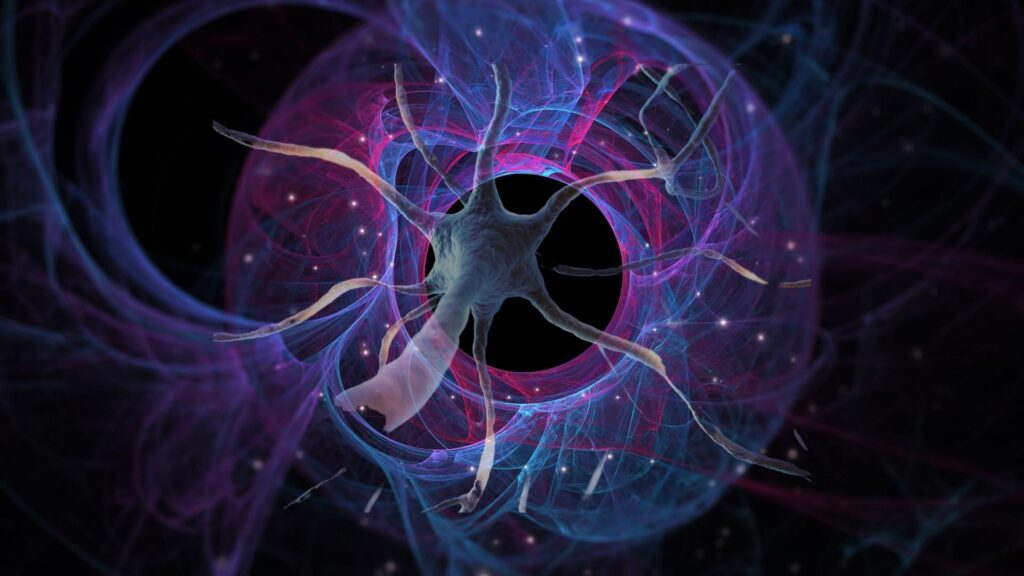The last and grandest biological frontier, the brain, which contains hundreds of billions of cells interlinked through trillions of mind-boggling connections, is the most complex thing we have yet discovered in our universe.
With everything hosted inside the brain, the universe is just its creation. In the absence of an active brain, the universe itself disappears. It is all in the mind.
Space and time are only present when our brains are processing information. When there is no activity in the brain, as in deep sleep, we don’t find space and time at all. The universe takes a backseat and vanishes into oblivion.
Recent studies of superstring theory relating to the smallest subatomic particles suggest the possibility of as many as 10 dimensions. However, the human brain is capable of sensory processing and conceptualizing only 3 dimensions—height, width, and depth.
The human brain is a miracle of organic design that works with inconceivable efficiency. The brain stem and the cerebellum possess no consciousness. That makes our breathing, digestion, heartbeat, and body movement all automatic. The neocortex, with its association, motor, language, and higher-order thinking regions, gives us what we call consciousness. To say that this organ can detect additional dimensions within its scope of functioning appears to be a natural conclusion.
That’s why the home of the whole universe is the brain, where we ourselves reside. It means not “we have a brain” but “we are in the brain”.
The natural cosmic order is like one mind with many parts. When we look at it from the outside, our impression of the whole thing is essentially that of a single mind because the multitude of individual parts is essentially bundled up into one object from our perspective.
On the other hand, when we view it from within, we see that we are one tiny speck inside this vast cosmic mind or brain. This then gives us yet another dimension to appreciate the beauty and harmony of the cosmos.
Neither any content nor any form exists outside of our brain. Though our body houses the whole universe and we live here in form, what we call our mind or brain is our mental image of the universe.

While being capable of higher functions than the natural cosmos, our brain is nonetheless an instrument for the natural order. For example, our brain records visually whatever it receives from our eyes; it stores the information in memory and replays this visual information.
The same process occurs for our other senses, such as hearing and touch. Our brain does not create any data we sense but is capable enough to store, recreate, and replay it. Anything else in the universe, including huge celestial bodies like the Sun and the Earth, lacks this very ability.
When we observe the universe, we do so solely from our own perspective because time and space, as well as our physical barriers, unfortunately, limit us from viewing it from elsewhere.
In contrast, when we observe ourselves, we are able to see beyond this temporal and spatial limitation by removing the veil of our own minds. The universe then reveals itself with a new light of its own (of course, light must be part of the natural cosmos).
All things are in ourselves, but not in any particular part of ourselves.
The whole universe has no outside, as it does not need anything from anywhere else. For example, a galaxy does not require a star to shine, nor does the Earth require us for its existence.
We are one with the universe, but we cannot identify with it because the limitations of time and space naturally confine our thinking. It is all in our minds, yet we see it from outside ourselves.
It is all in the mind, but of course, it can’t be identified with any particular one of us. The “we” that exists apart from our body is not some mental entity called ego, as previously thought to be, but just another way of saying “the natural cosmic order”.
Imagining yourself as a part of this cosmic brain, otherwise called “The Whole,” is a powerful way of appreciating the whole. As it uses your brain as its instrument, your experience is inseparable from its experience.
You might feel like a separate individual, but in reality, you are just an ordinary part of your brain. From this perspective, the whole universe comes to life and, at the same time, becomes more real to us by being made visible within our perception.
To be a part of the whole universe is to be a part of more than that – it’s to be the whole thing. It is not only to feel the whole mind and to know the cosmos in your head but also to experience your mental image of the universe as being real.
When we imagine ourselves inside our brains, we are seeing ourselves from within. This means our heads are not just any part of the cosmos, but also its entirety. In that sense, when you look at yourself physically and mentally – including your feelings and emotions – you are seeing yourself as part of a single entity, which is the whole universe itself.
- AI-Powered PCs: Overhyped Trend or Emerging Reality? - August 21, 2024
- Princeton’s AI revolutionizes fusion reactor performance - August 7, 2024
- Large language models could revolutionize finance sector within two years - March 27, 2024



